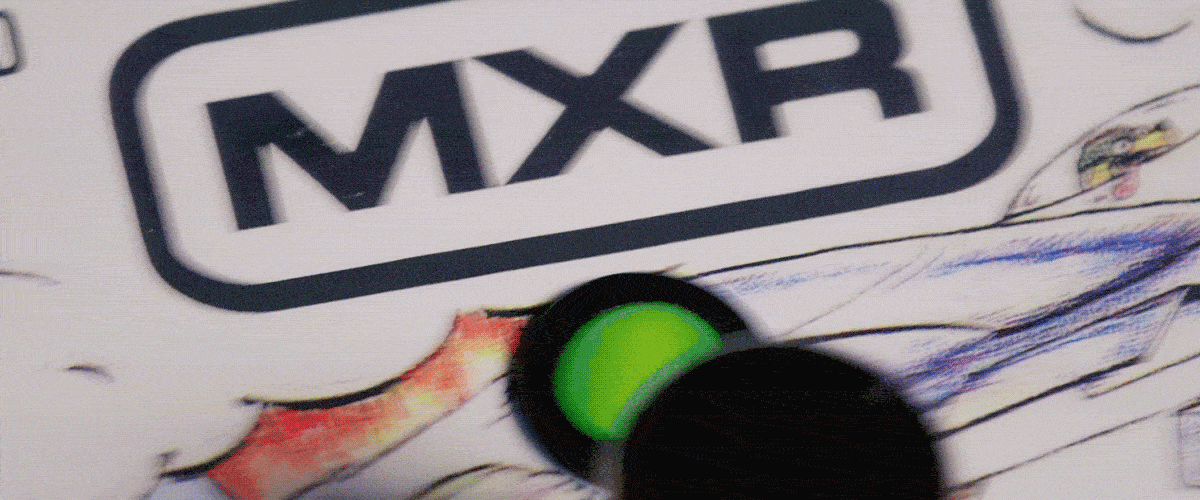They aren’t afraid to look outside for fresh perspectives every once in a while and refresh their creative energy by collaborating with other forward-thinking designers. In recent years, this outlook has resulted in the
Raijin™ Drive Pedal and the
Shin-Juku™ Drive Pedal with Shin Suzuki, the
Il Torino™ Overdrive and the Il Diavolo
™ Overdrive with Carlo Sorasio, and the
Bass Distortion with Ryan Ratajski. In 2020, we’re super excited to bring you MXR’s latest collaboration—the
MXR® Timmy® Overdrive with Nashville pedal builder Paul Cochrane.
I built the first Tim Overdrive for myself and my specific needs. Nobody was making exactly what I wanted—a pedal to cleanly boost my Marshall Plexi Super Bass.
Since 1997, Paul has been building professional-grade amplifiers and pedals for first-call session players and big time rockstars. Impressed by the clever design and popularity of Paul’s Timmy Overdrive—a secret weapon on the pedalboards of numerous players—the MXR team reached out to Paul back in 2018 to talk about working together. In no time, they combined their efforts to adapt the Timmy Overdrive into an MXR mini housing, including the selection of the LF353 op-amp, a component that perfectly complements the expertly crafted Timmy circuitry with high output, high gain, and hi-fi signal delivery. The resulting pedal is a must-have for players who want sweet, harmonic breakup that responds to playing dynamics and maintains the personality of your rig at a fraction of the size of a standard pedal.
Paul sat down to talk with us to tell us about how he got into making pedals and the origins of the Timmy Overdrive.
How did you get into building pedals, both for yourself and for other players?
My father taught electronics in the Air Force, and would bring home parts that he would play with. That lead to me playing with Heathkits and eventually guitars and other gear that I would take apart and put back together.
How did the Tim and Timmy Overdrives come about?
I built the first Tim Overdrive for myself and my specific needs. Nobody was making exactly what I wanted—a pedal to cleanly boost my Marshall Plexi Super Bass. I wanted it to sound closer to a Marshall Super Lead, so the Tim Overdrive was to be a flat clean boost that could add more dirt if needed.
And then I named it after Tim the Enchanter from Monty Python, which was sort of an inside joke.
I voiced it to compliment the neck pickup on my strat so that I could achieve the woody warm gain for lead tones without sacrificing anything when switching to my bridge pickup. It was meant to serve as a “clean boost that could get dirty” as apposed to a mid-focused dirty boost. And then I named it after Tim the Enchanter from Monty Python, which was sort of an inside joke. The Timmy Overdrive came about when customers requested a scaled down version of the Tim pedal with a more streamlined feature set. I first released it back in 2004.
Which pedal builders and players have inspired the sounds of the gear that you create?
I have a great deal of respect for all the other pedal builders out there, but there wasn’t one specific person that inspired me. I just went with what I needed, something that didn’t exist in the market. So I made it myself.
That being said, I’m a Marshall guy who loves an AC/DC rhythm tone and an Eric Johnson lead tone. You could say that’s the inspiration for the sounds that I try to create.
What was your biggest personal/professional thrill involving a Tim or Timmy Overdrive?
When I turn on Nashville radio and hear a guitar tone that I know is a Tim or Timmy and Dr Z, I’m proud. And when someone tells me that they have had one on their board for 10 years and have never taken it off, that makes me feel good.
My favorite band is Rush, and I was told that Neil Peart played on a Vertical Horizon record where Matt Scannell used a Heritage Colonial amp and a Timmy Overdrive, so I got to hear tones fueled by my gear on a record with Neil. Awesome feeling.









